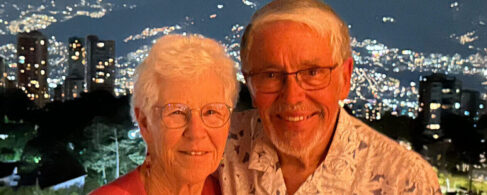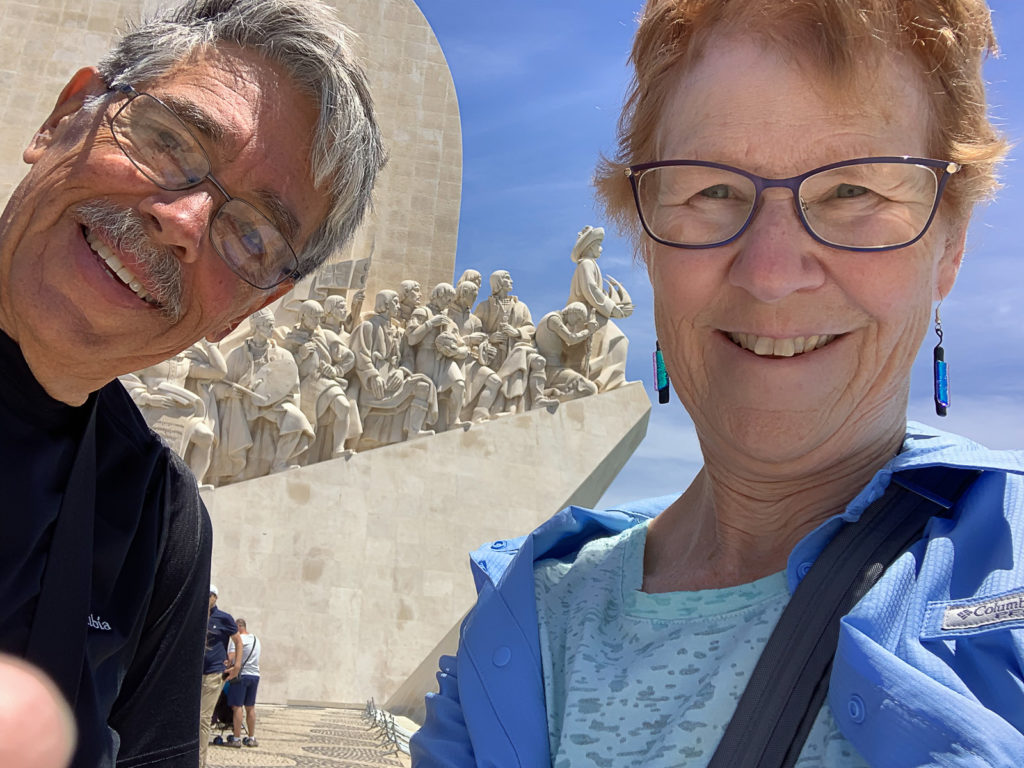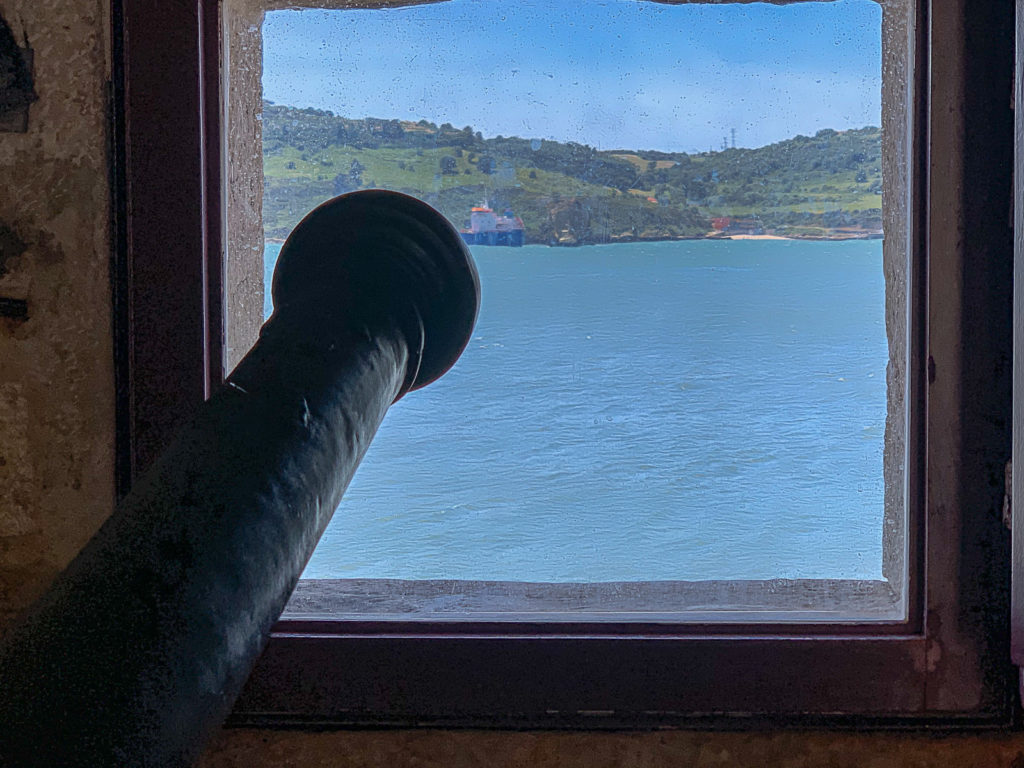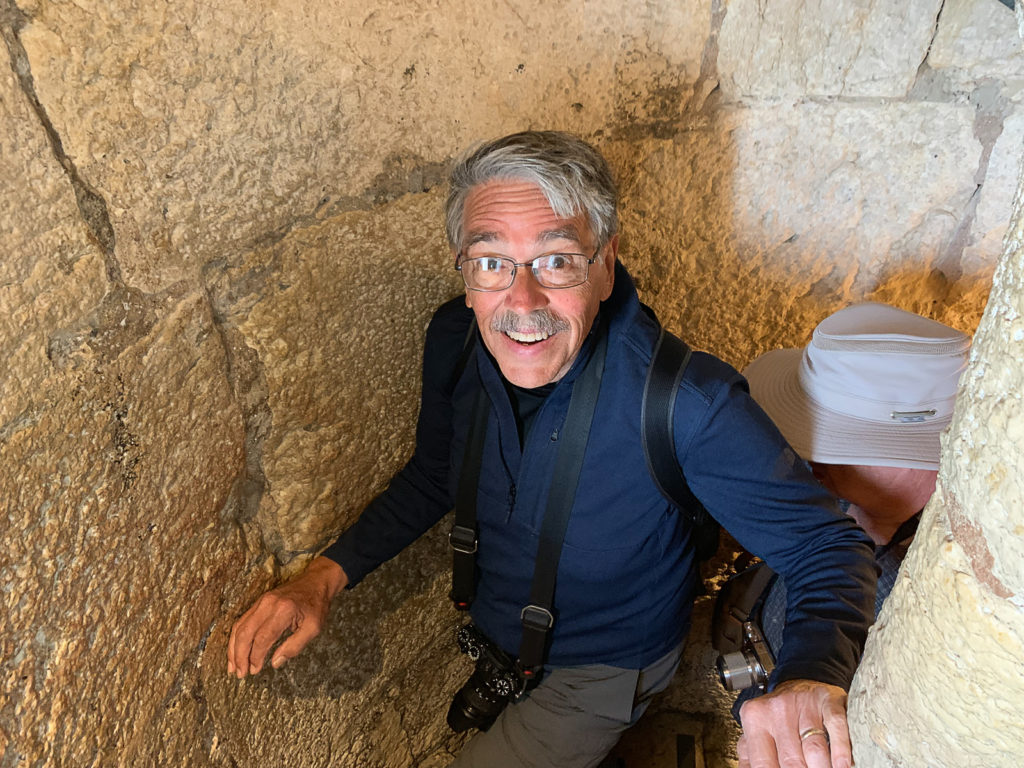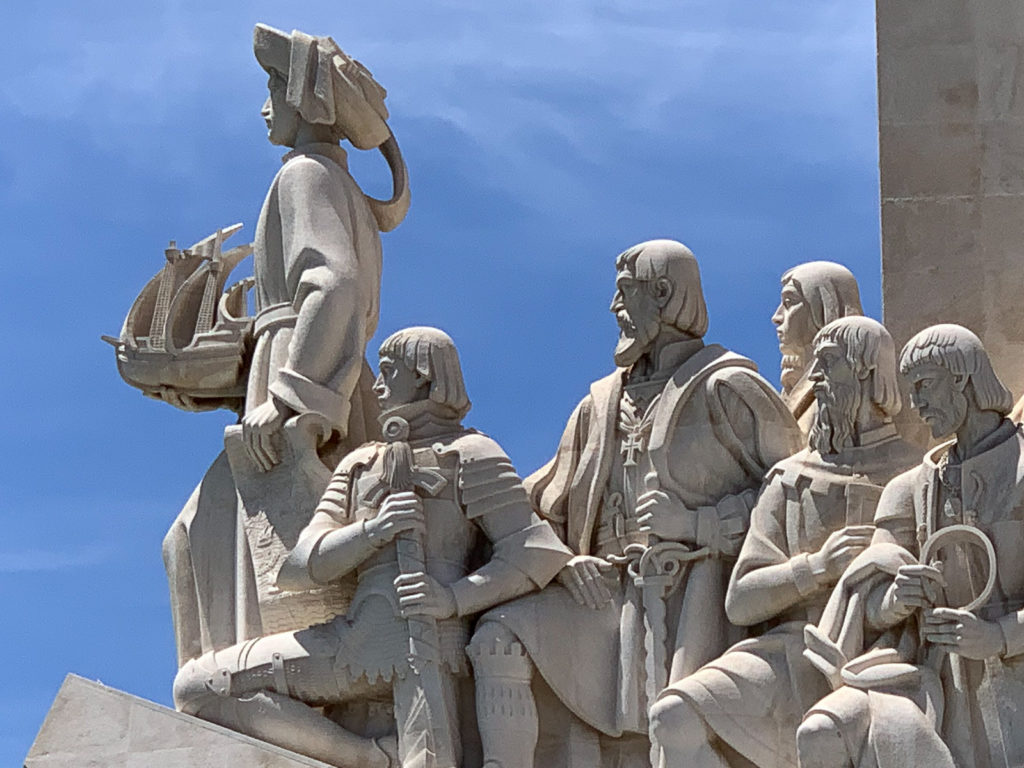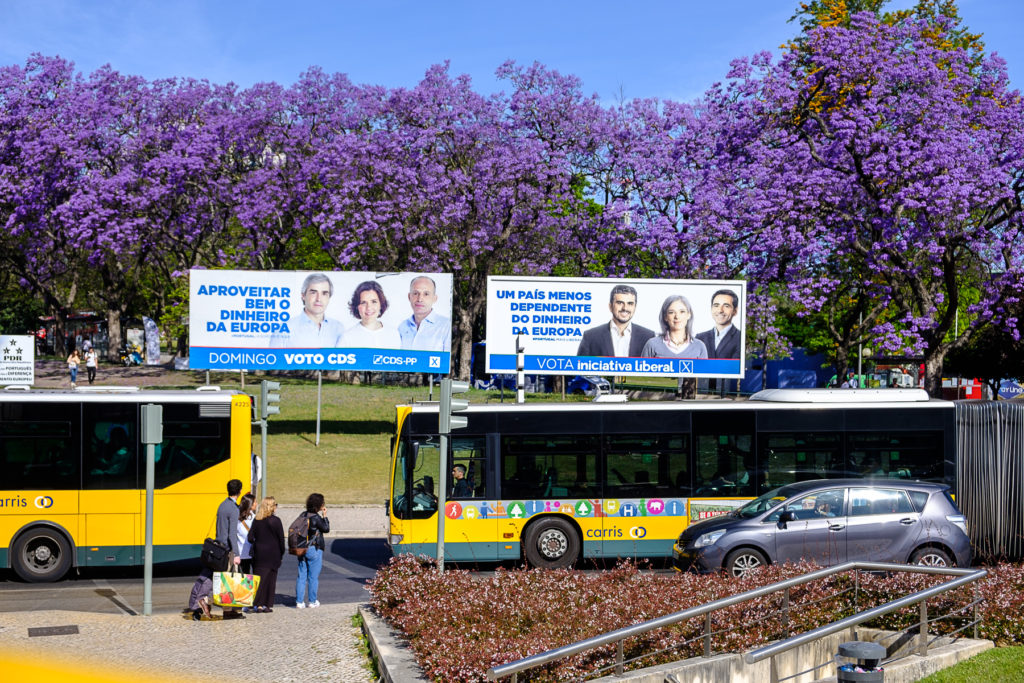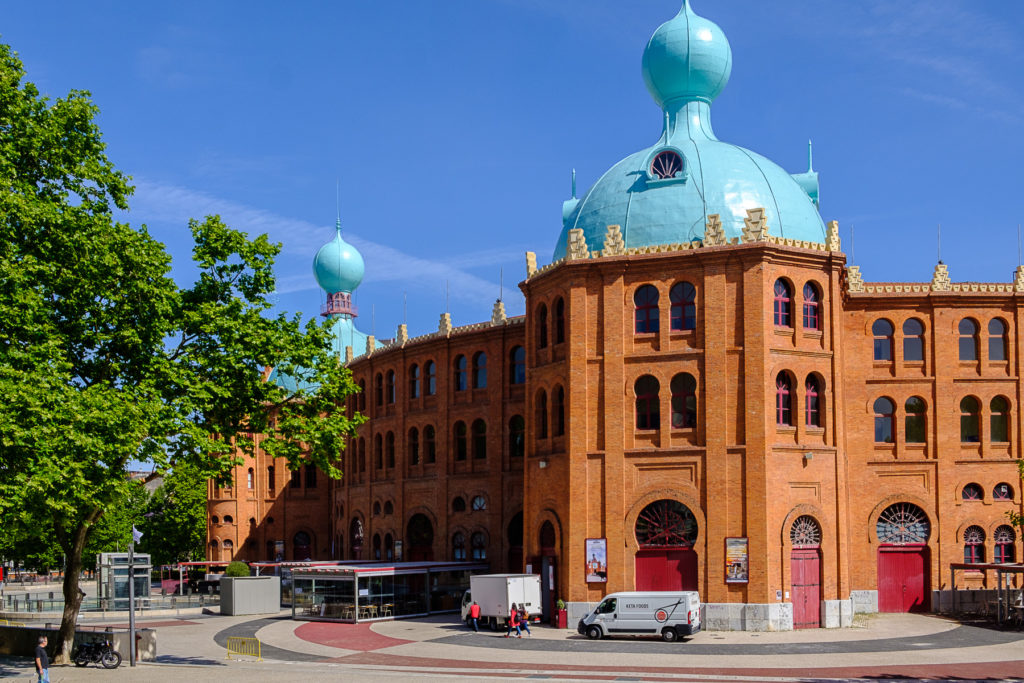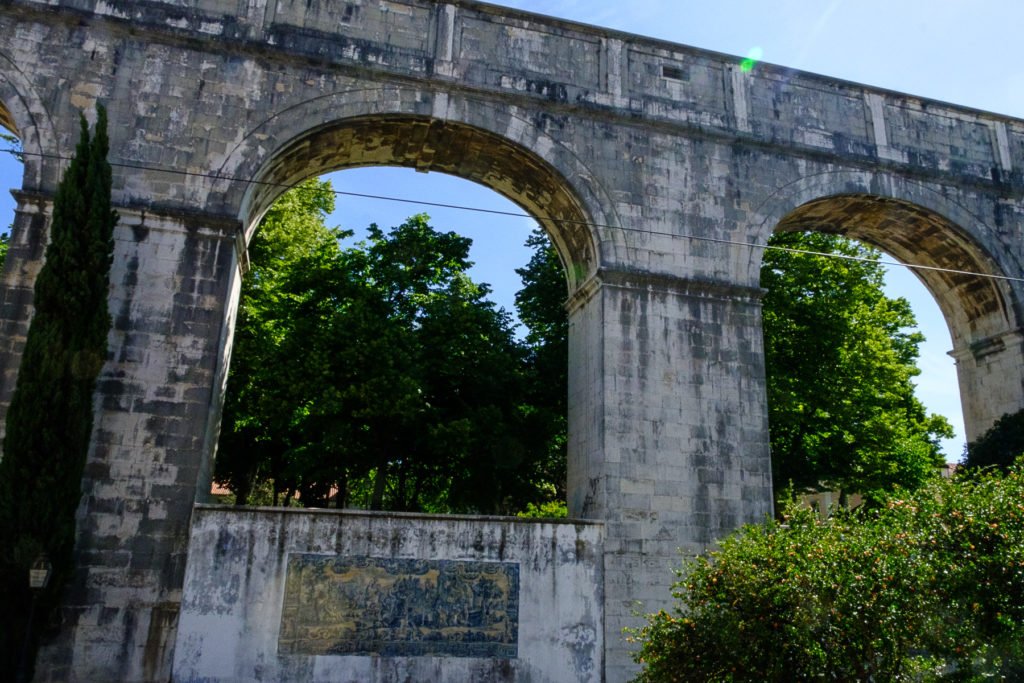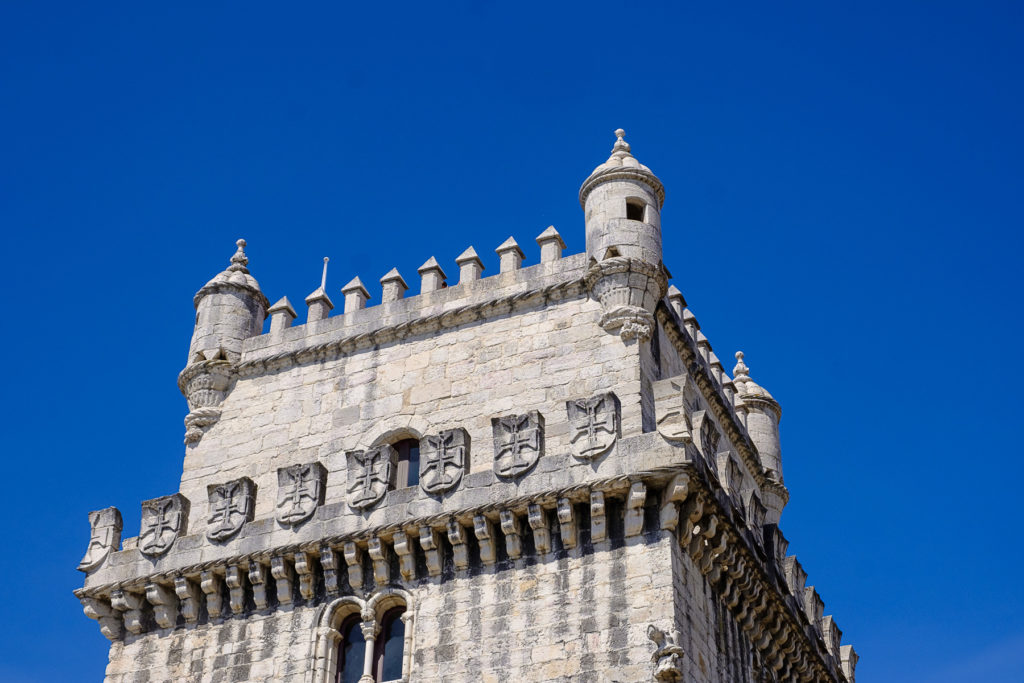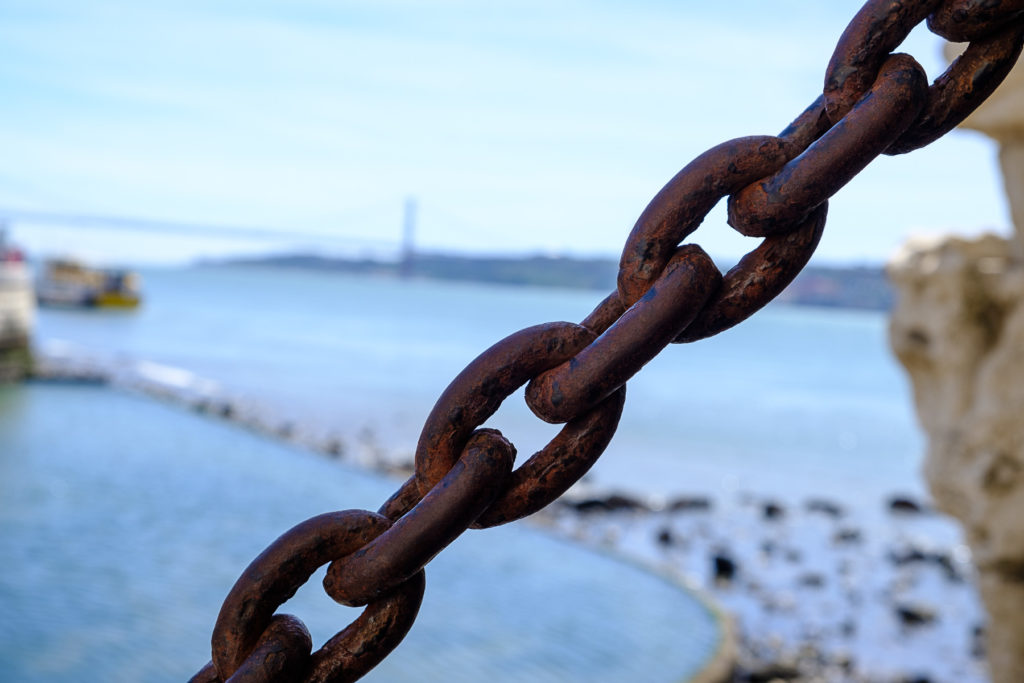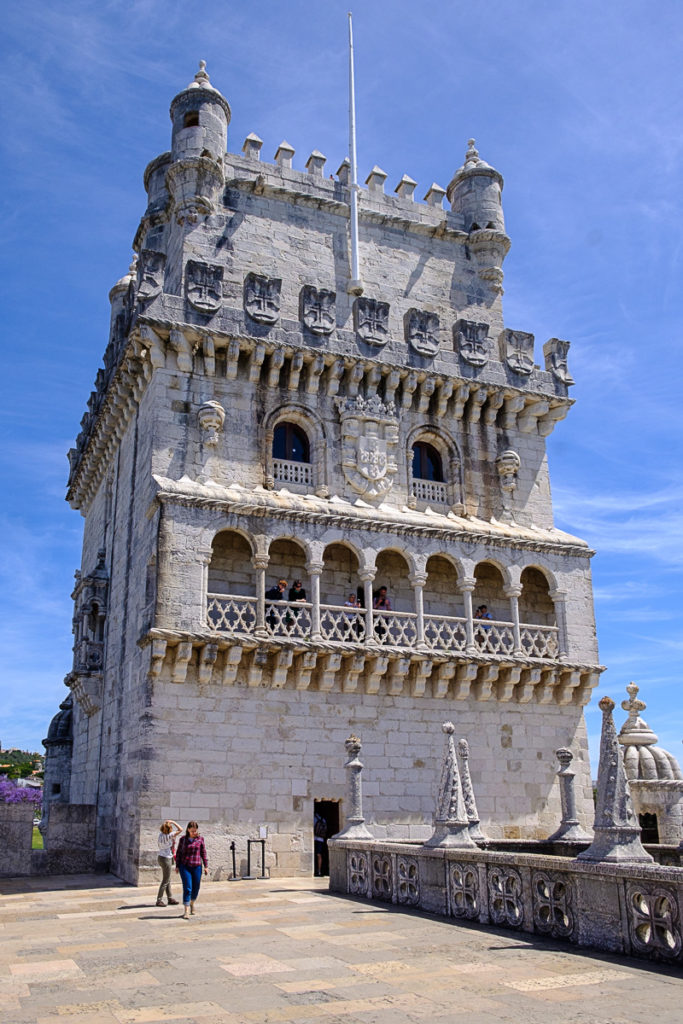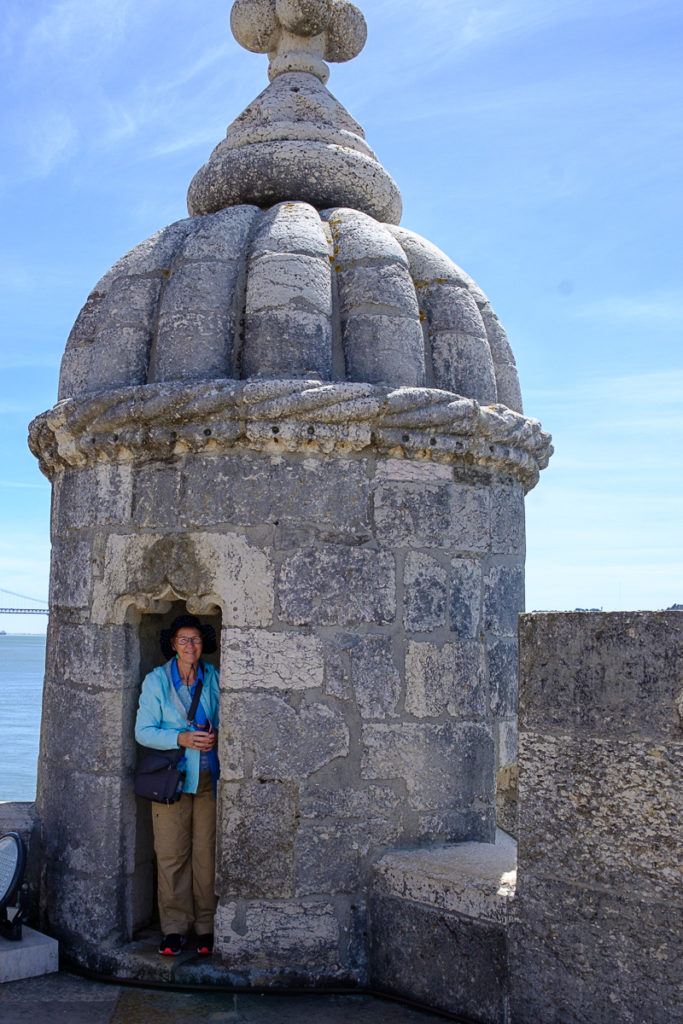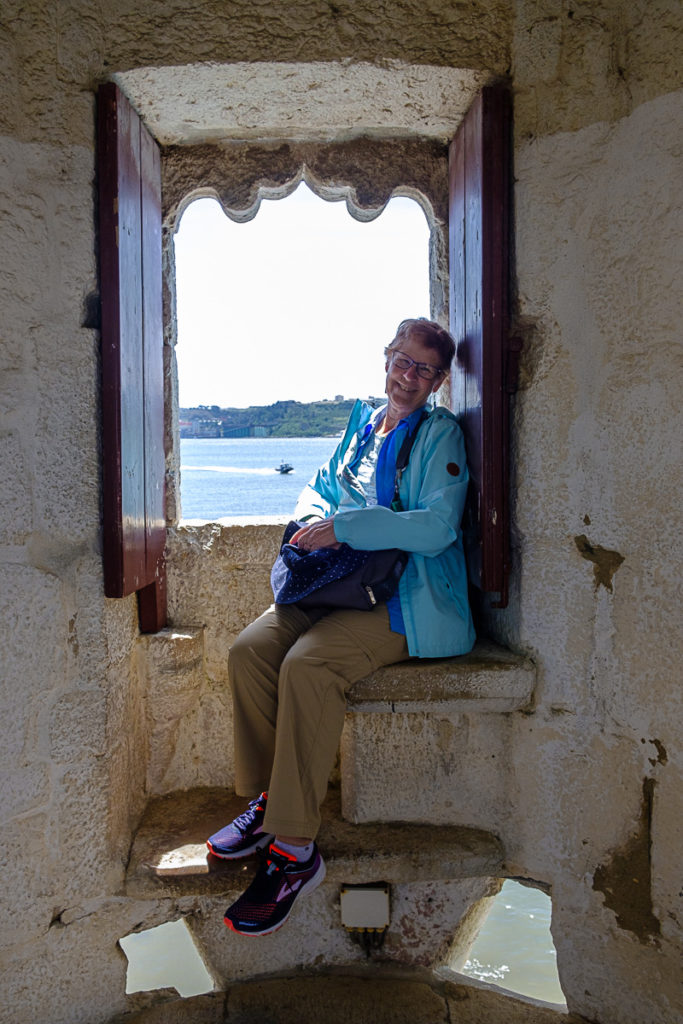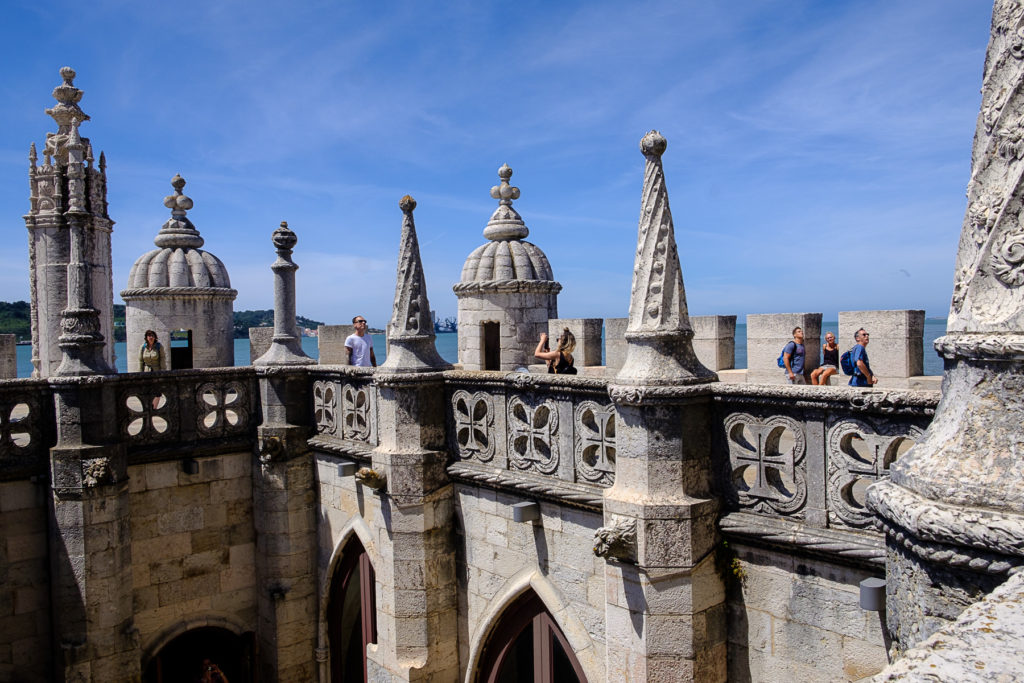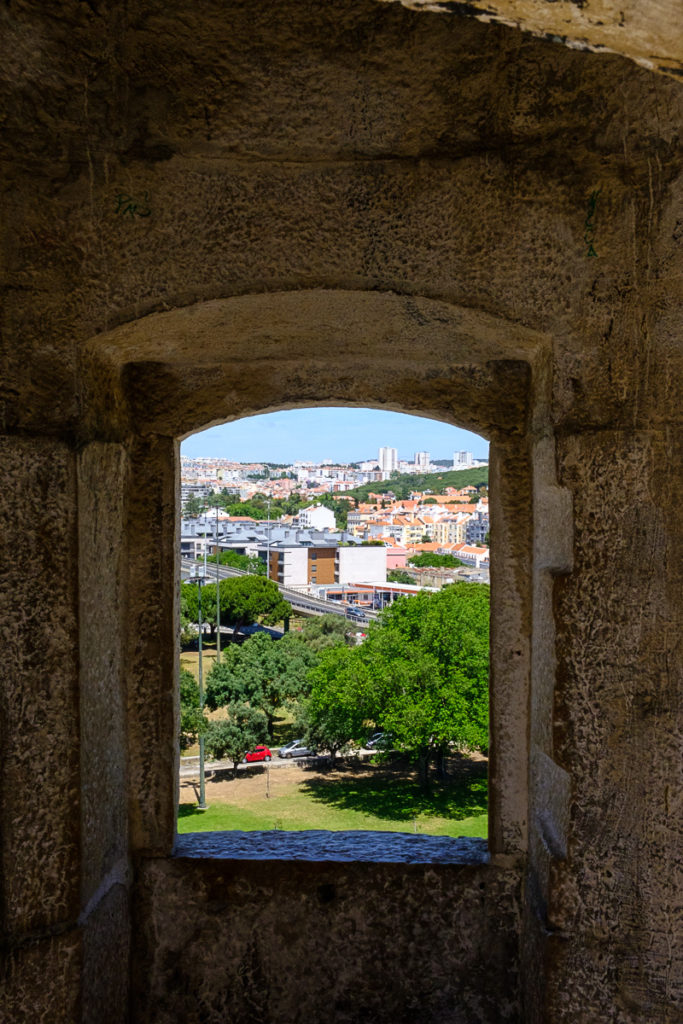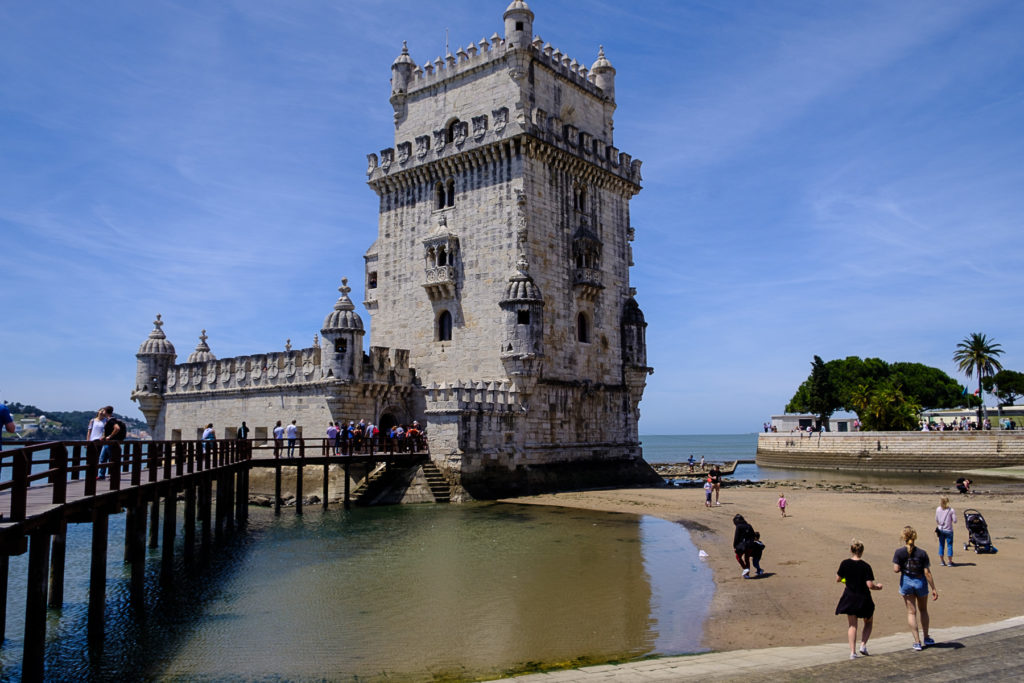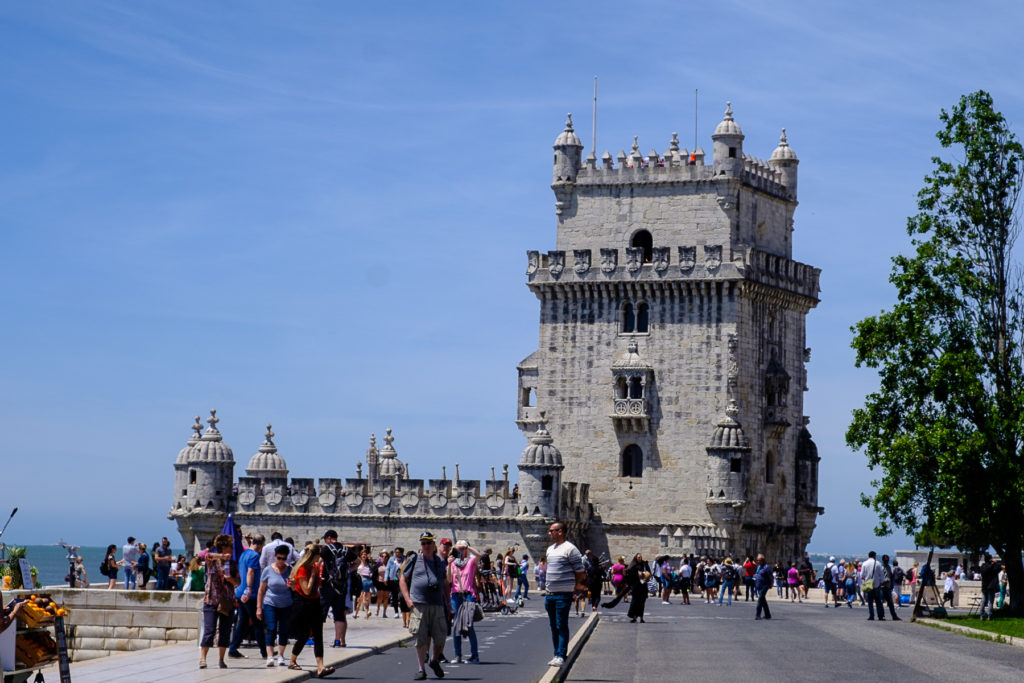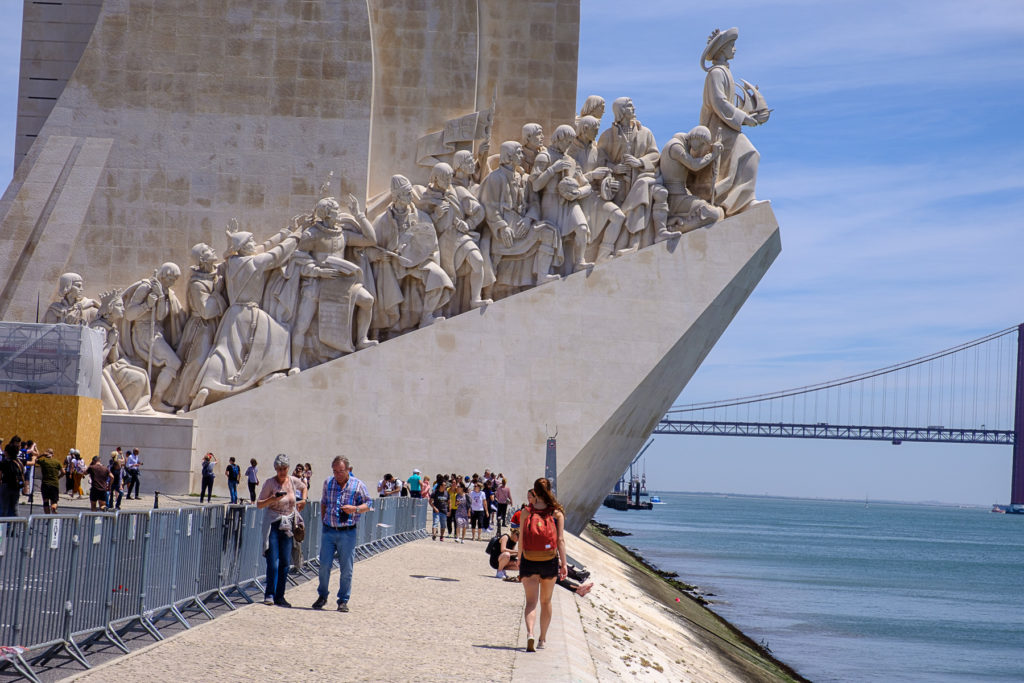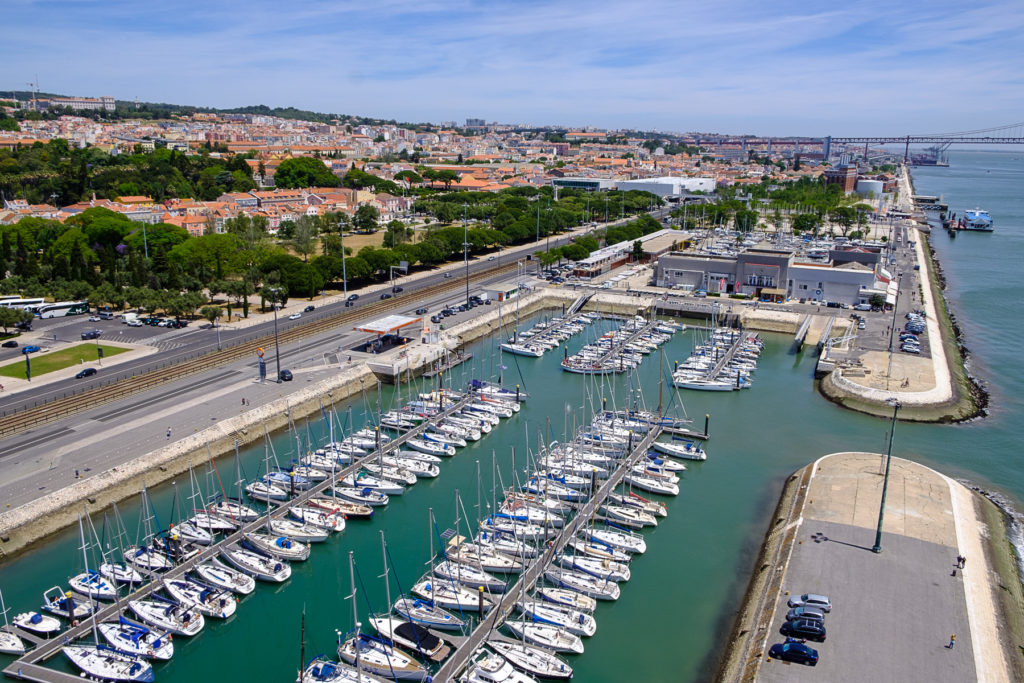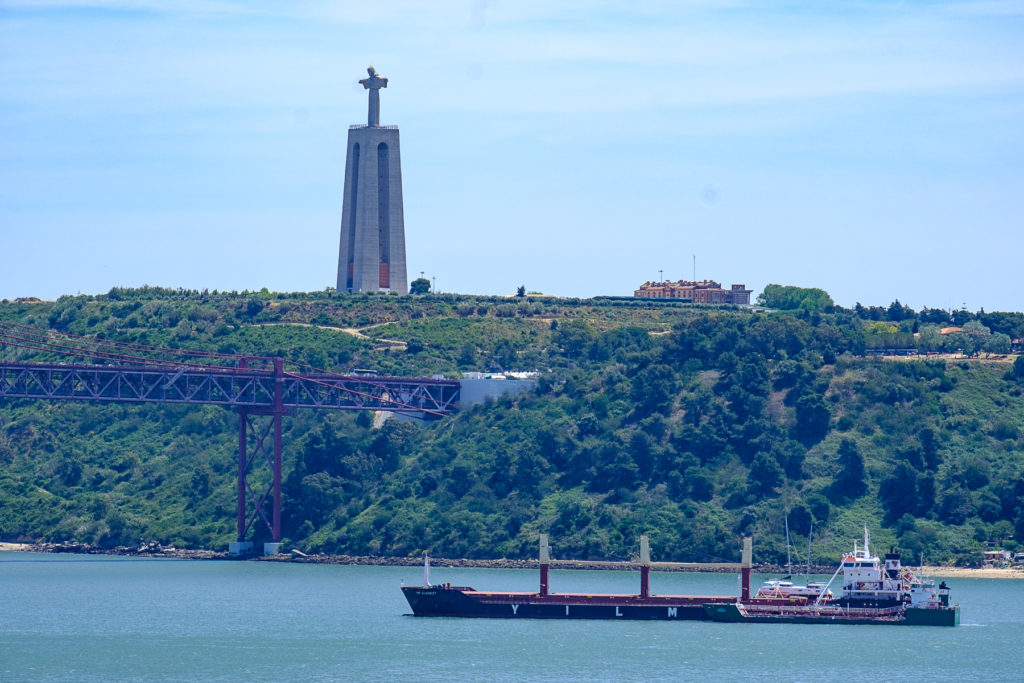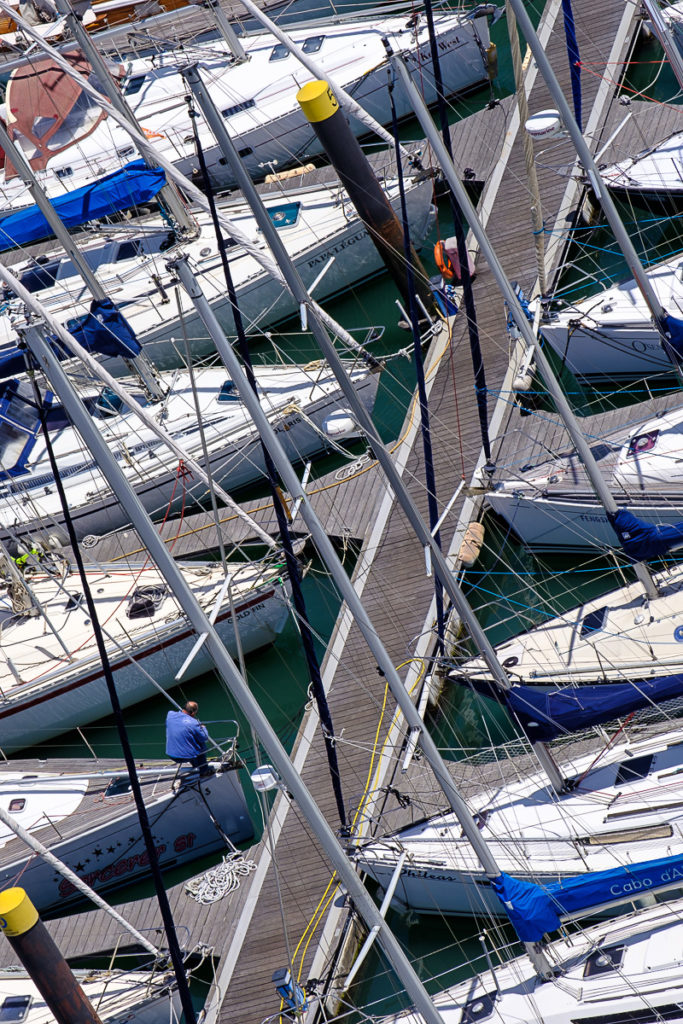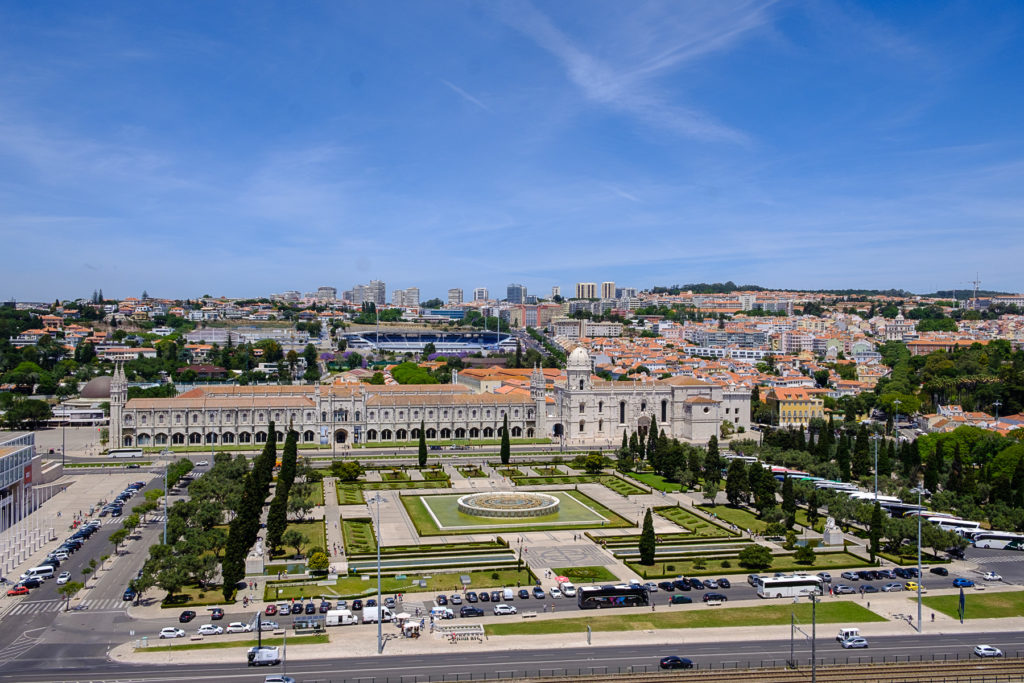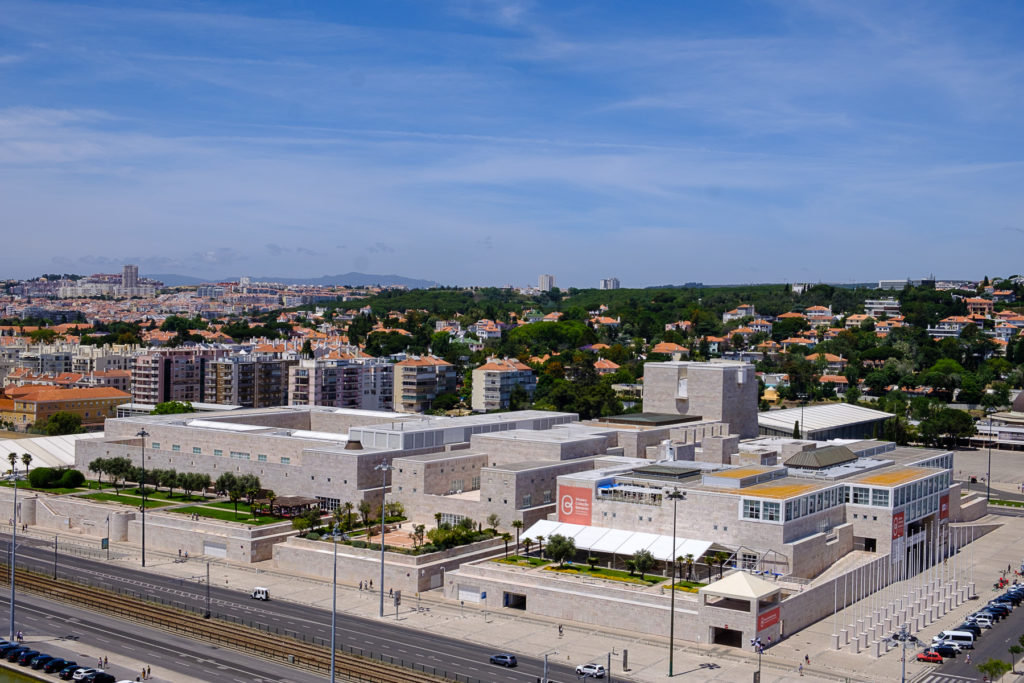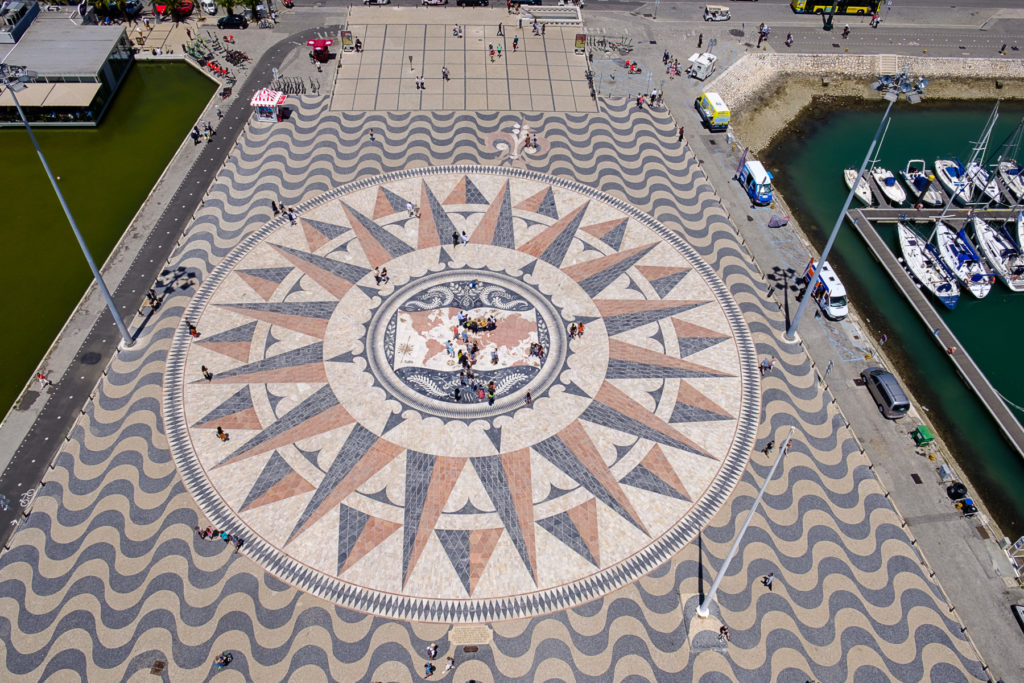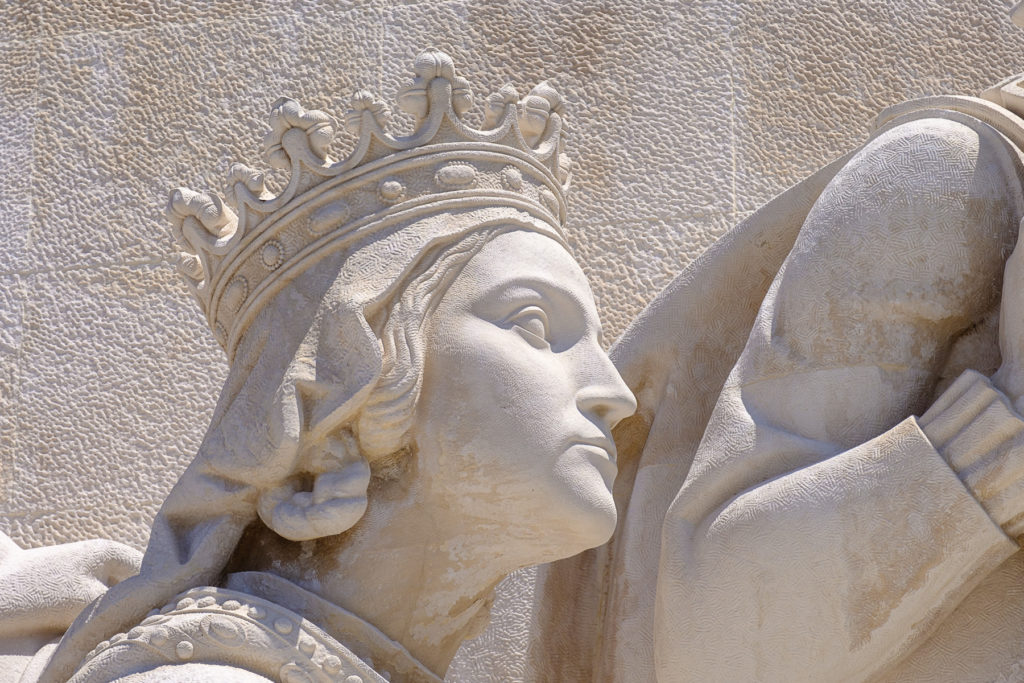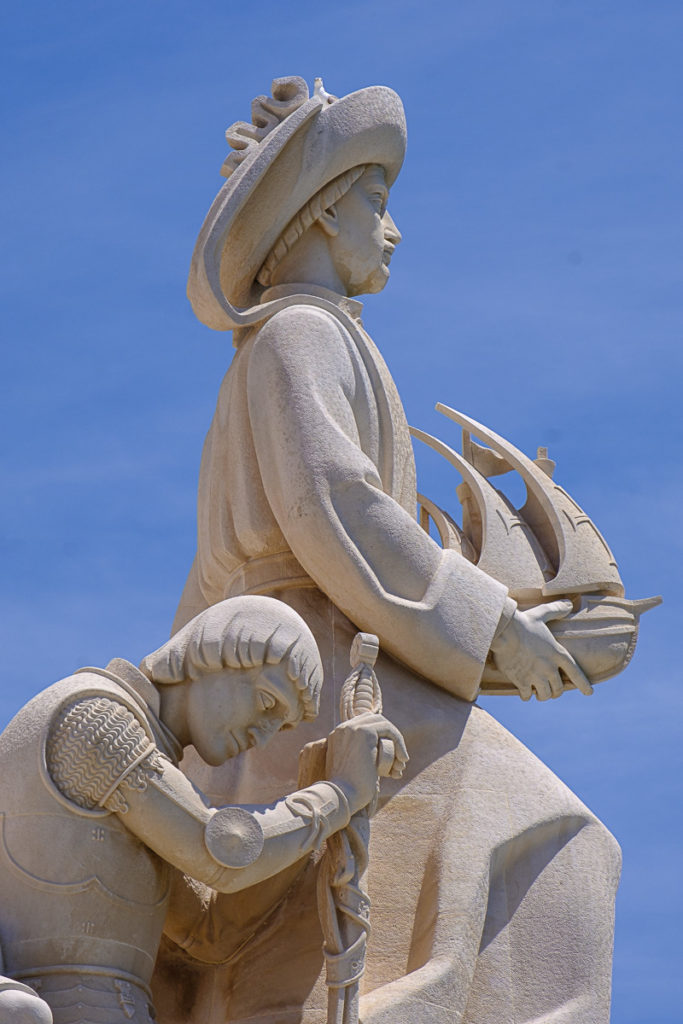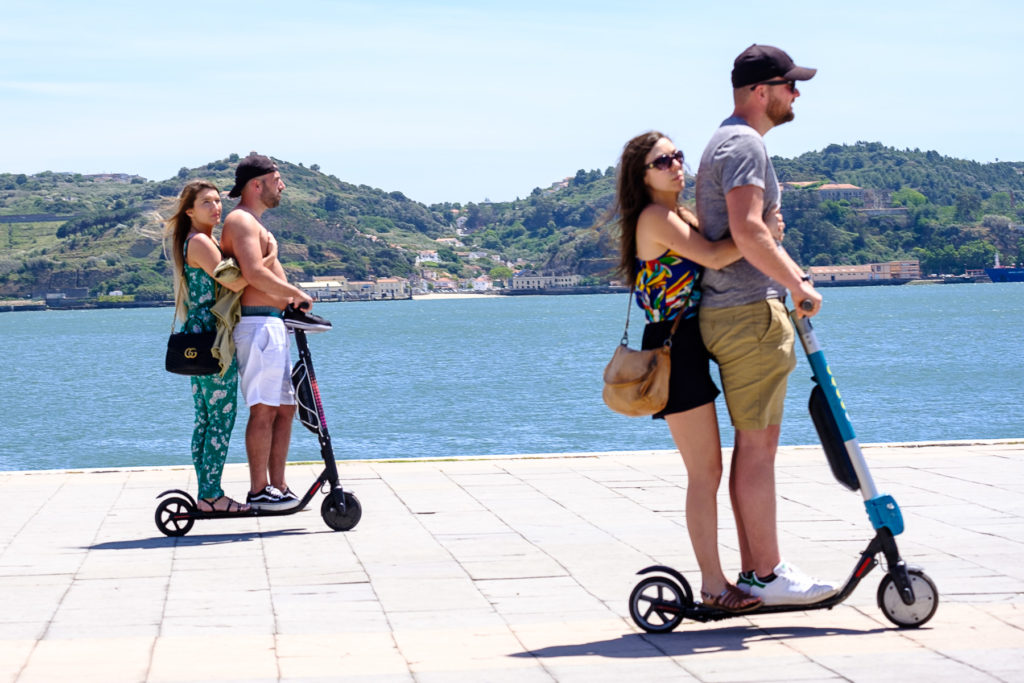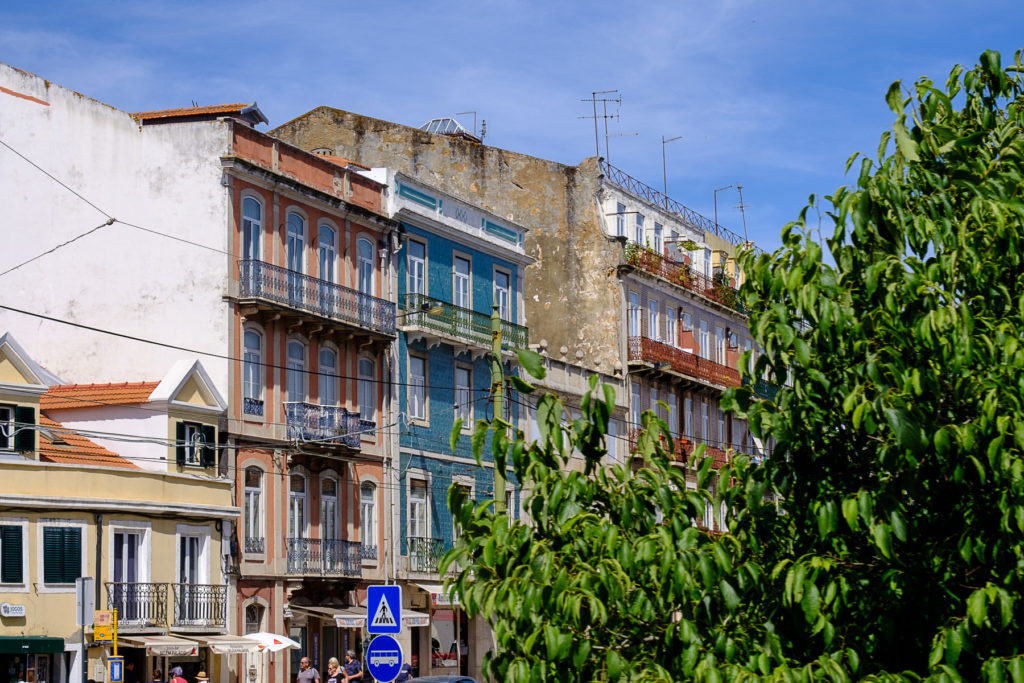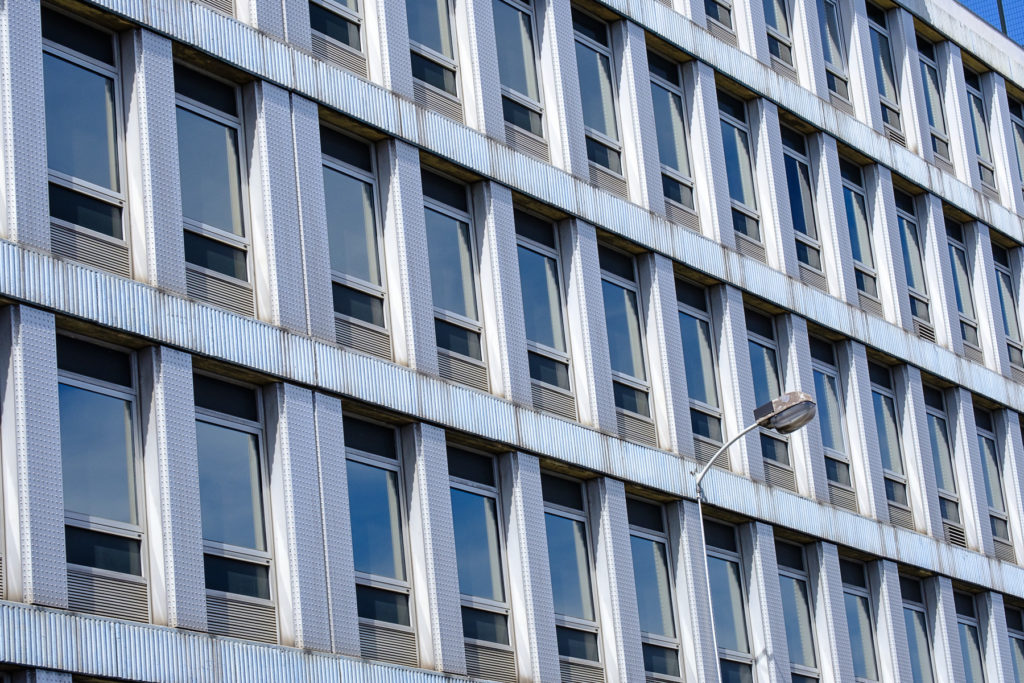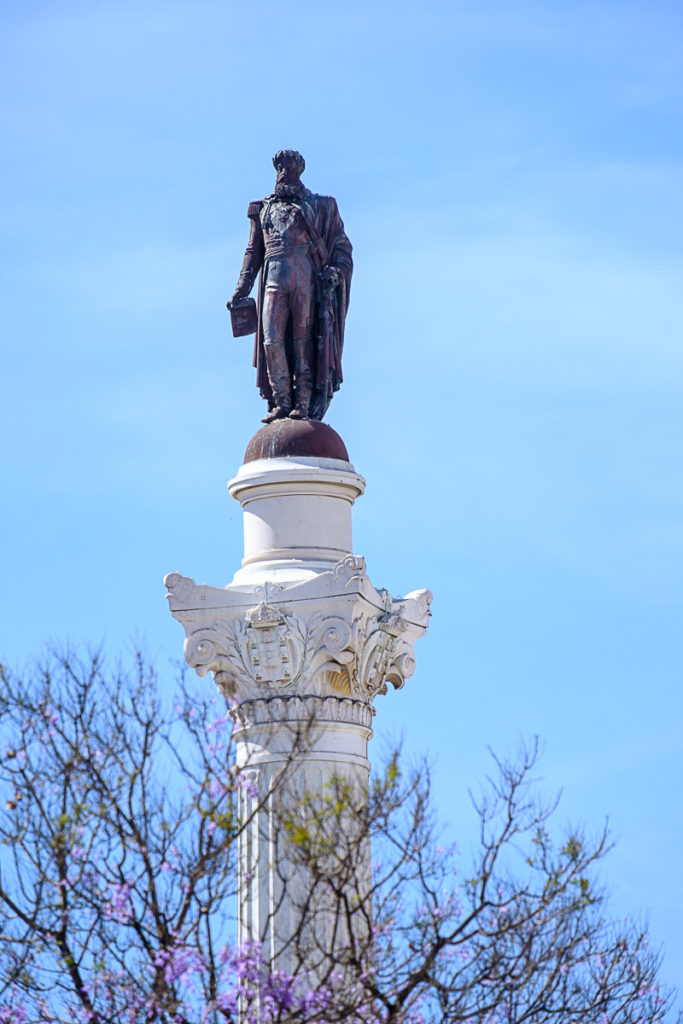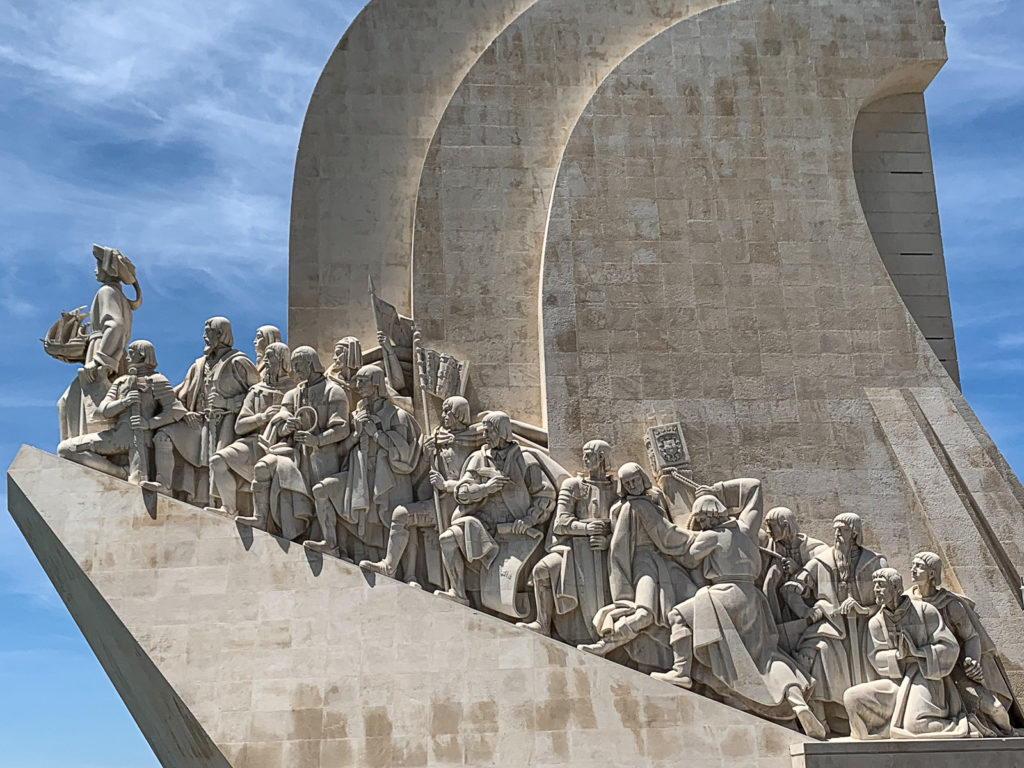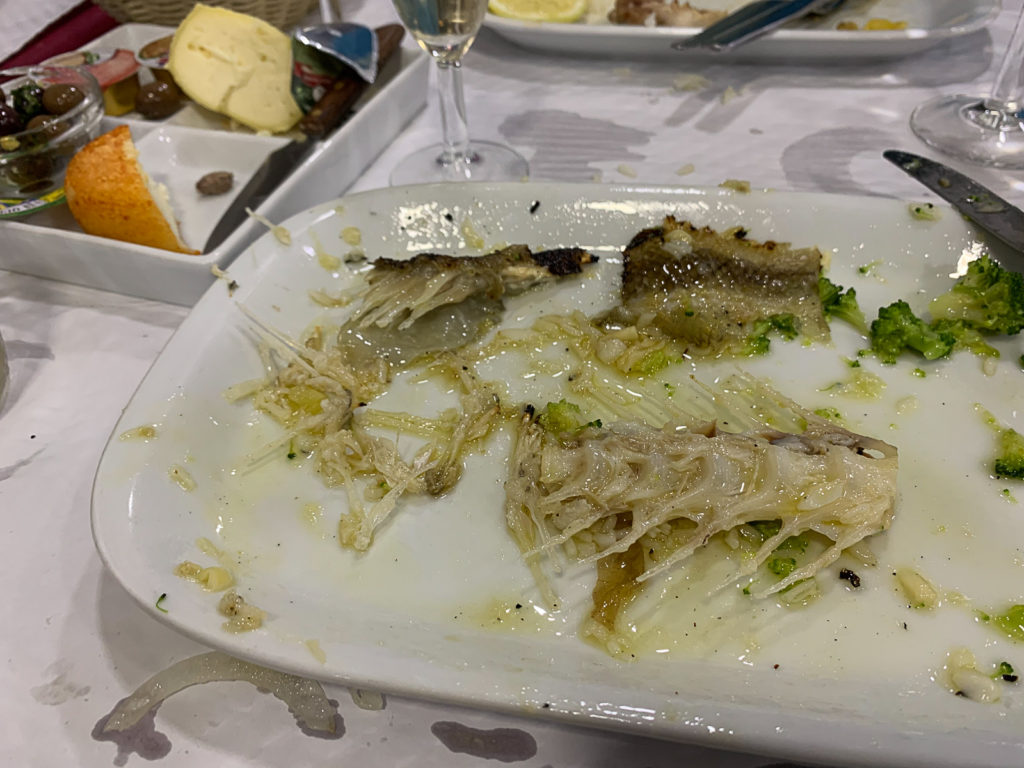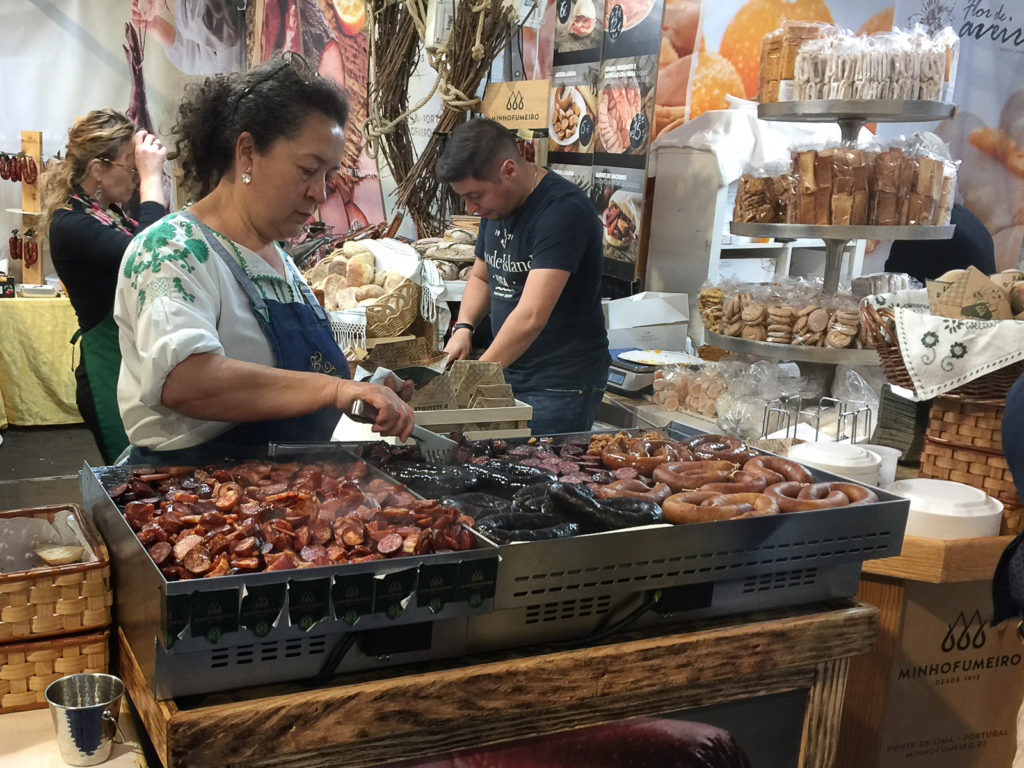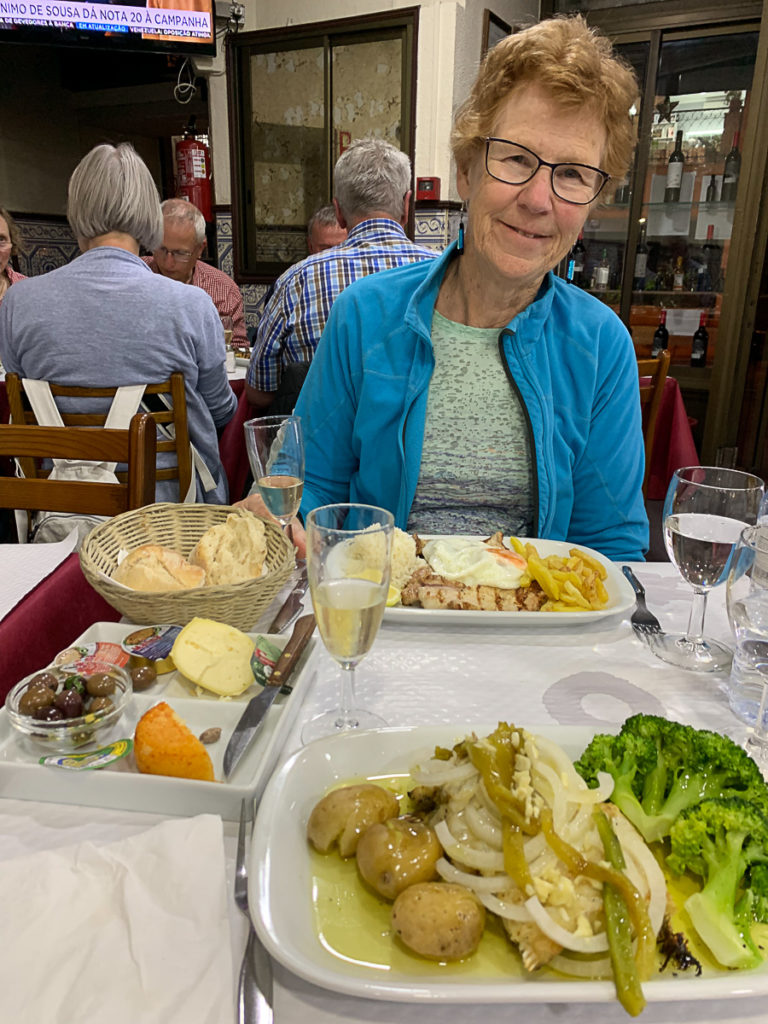Today’s mission: explore Lisbon by Hop-On/Hop-Off bus and visit Belem, including the Tower of Belem and other points of interest in the area. We really didn’t have any plans beyond that; this was a “see what happens” kind of day.
Sorry to report, but the bus thing was a bust, more or less. First, we had trouble finding our pickup spot. It seems that Stop 6 near our Dom Pedro IV square had been deleted, even though it still shows on the company’s map. Turns out the Yellow bus company had prohibited our Red bus company from using that stop for reasons unknown to us. There is another Red bus company, this one run by Grey Line Tours. We’d picked ours at random from Internet listings. The travel promotion business, like most things on-line these days is a wild and wooly place. And the earphones that were supposed to provide turn-by-turn commentary didn’t work.
The bus ride itself did indeed take us around town but truth told, no stop made us leap from our seats and hop off. The architecture of the buildings was unremarkable: plain block buildings, nice enough and colorfully painted but still, not very inspiring. And the roads! And the traffic! And the traffic lights! Bump, bump, screech, wait and wait. But we made it to the Tower of Belem having “done” downtown Lisbon and environs.
Speaking of the plain architecture, did I mention the Portuguese dictator Antonio de Oliveira Salazar who was Prime Minister from 1932 until 1968? His party, Estado Novo, continued in power until 1974 when it was overthrown in the Carnation Revolution. It seems that the prime minister was holed up in a government office building, surrounded by artillery and troops ready to roust him out – just like what happened in Chile to the Marxist prime minister Salvador Allende in 1973 when troops loyal to Pinochet did indeed bomb him to death in that country’s bloody coup. In Portugal the local flower sales ladies, so the story goes, placed carnations in the barrels of the guns while the prime minister escaped out the back door. Not a shot was fired.
Far be it for me to try to bring sense to Salazar. Wikipedia says he was against “ democracy, communism, socialism, anarchism and liberalism.” He didn’t like the Nazis and Mussolini but did support the fascist dictator, Franco, in Spain. He kept Portugal neutral during WWII but did provide certain raw materials to the Axis countries via Switzerland since he viewed the Nazis as a line of defense against Stalin and the communists. Salazar allowed the Allies to use Portugal for air operations and provided raw materials, just as he did to the Axis countries. Portugal was also a hotbed of spy operations, including Graham Green and Ian Fleming, who is said to have patterned James Bond after Dusko Popov and Casino Royale after the Estoril Casino, which we drove past yesterday. Both Greene and Fleming operated in Portugal during the war.
How did I get off on this tangent? Ah yes, the architecture. It seems Salazar was a far-right conservative (but don’t call him a fascist). He did bring a level of economic stability to Portugal. His austere economic philosophy meant that, unlike King Manuel, the architecture was as I described: plan and almost Soviet in style. Salazar also established political stability but did so by using imprisonment and torture, suppression of human rights and control of the press.
Sorry for the diversion. The bus got us to Belem, we climbed the tower, enjoyed nice views of the river Tagus, which connects Lisbon to the Atlantic Ocean. We enjoyed warm, breezy blue-sky weather. The fortress was built by Manuel II (the spices-from-India guy back in the early 1500s, remember?). The tower’s mission was to defend Lisbon from sea attack. That didn’t work out as planned. The fort was completed in 1519, King Manuel II died in 1521 and the Duke of Alba from Spain launched an attack that lasted for only a few hours before the Portuguese defenders surrendered. The Spanish promptly turned it into a prison. Oh well.
Belem was also the point of departure for the Portuguese explorers, including Vasco de Gama. Later, it was the seaport used by the spice fleets that sailed annually to India and Asia. Usually some, but by no means all, of the fleet returned the following year, bringing the untold wealth that King Manuel used to build Lisbon and Portugal into the world power that it became, stealing the spice trade from the Muslims and the Venetian merchants.
Imagine if you will being the family and friends of sailors sailing off into the horizon, knowing full well that the chance of return for those loved ones was small. Belem is where they stood watching the departure.
We found nearby a more recent Monument to the Discoveries commemorating the Age of Discovery that led Bartolomeu Diaz to discover the Cape of Good Hope (named by Diaz “Cape of Storms” and renamed for marketing purposes later on) and de Gama to find the route to India. Actually, the lead figure is Prince Henry the Navigator who was responsible for development of the caravel, a technologically advanced sailing vessel that allowed Portugal to explore and exploit western Africa. The fourth son of King John I, Henry convinced his old man to let him and his brother capture the Moorish seaport of Ceuta on Morocco’s northern shore. Thirty-odd others from the Age of Discovery are memorialized in limestone (from Sintra) in a striking structure and sculptures. All this was done under Salazar’s regime.
We got back to the hotel four-ish, had a nice nap and I’m typing this before dinner – daughter Rebecca will be pleased!
Tomorrow it’s farewell Lisbon, hello Belmonte. We pick up the rental car first thing and hit the road on the next leg of this adventure. It occurred to us that the Catholic pilgrimage village of Fatima is on the road to Belmonte, so we will drop by for a visit. Total driving time is less than three hours, Google claims, so we should have plenty of time for sightseeing along the way.
Update: What Lisbon lacks, IMHO, in architecture it more than makes up for in the culinary arts. Tonight, starting from nothing, we found a plethora of interesting restaurants within 10 minutes walking distance from our hotel. We almost succumbed to a food market under a tent across the street where maybe 50 vendors had food to go for sale. Grilled sausage kiosks alternated with pastry shops. Instead we found a restaurant we’d picked out on Google. I had cod and Judy had pork filets. The cod came as a piece of cod, bones and all and was it ever good. If we were to stay another week I’d give up on the sightseeing and do nothing but eat. We picked up pastries at the food tent on our way home.
